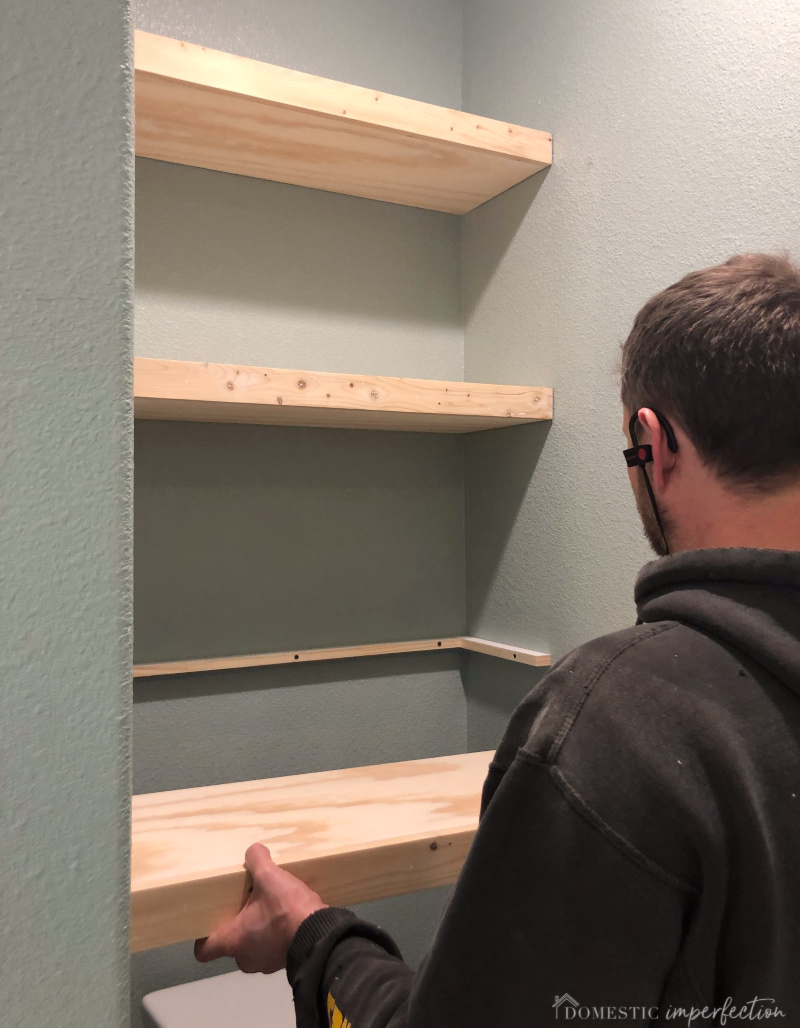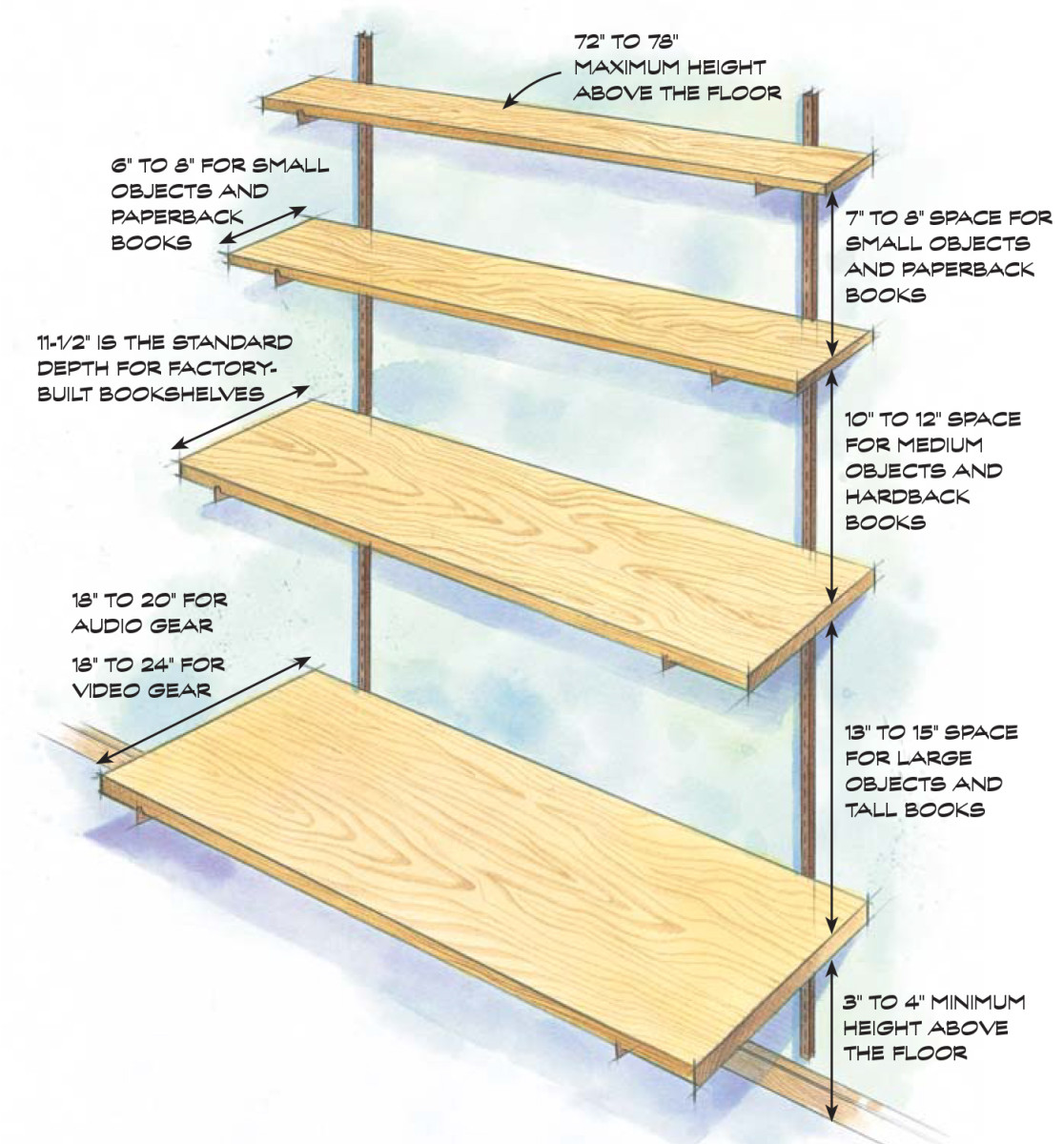Are you wondering just how wide a plywood shelf can be? You’ve come to the right place!
When it comes to building shelves, plywood is a popular choice due to its strength and affordability.
But before you start your next DIY project, let’s explore how wide your plywood shelf can safely be.

How Wide Can a Plywood Shelf Be?
When it comes to creating shelves using plywood, one of the most common questions that arises is, “How wide can a plywood shelf be?” The width of a plywood shelf is influenced by various factors, including the thickness of the plywood, the type of support used, and the load capacity required. In this article, we will delve into the intricacies of determining the ideal width for a plywood shelf, providing you with the necessary information to create sturdy and functional shelves for your various needs.
Determining the Ideal Width: Load Capacity and Supporting Structure
When determining the ideal width for a plywood shelf, it is essential to consider the load capacity and the supporting structure. The load capacity refers to the maximum weight that a particular shelf can bear without sagging or collapsing. Plywood shelves typically have a load capacity that depends on the thickness of the plywood and the type of support used. For example, a 3/4-inch thick plywood shelf with solid wood supports can typically hold heavier loads compared to a 1/2-inch thick plywood shelf with only metal brackets as support.
Additionally, the supporting structure, such as brackets or wall-mounted rails, plays a crucial role in determining the width of the plywood shelf. These supporting elements distribute the weight evenly along the shelf, reducing the chances of sagging. It is important to ensure that the supporting structure is properly installed and can handle the weight of the shelf and its contents. Consulting weight-bearing capacity guidelines and considering the type of load you intend to place on the shelf can help in determining the ideal width for a plywood shelf.
Weight-Bearing Capacity Guidelines
In order to determine the ideal width of a plywood shelf, it is crucial to consider weight-bearing capacity guidelines. The weight that a plywood shelf can bear depends on the thickness of the plywood and the type of support used. Here is a general guideline for load capacity based on plywood thickness:
- 1/4-inch plywood: Suitable for lightweight items such as books, small decor items, or office supplies.
- 1/2-inch plywood: Can typically handle medium-weight items such as kitchenware, small appliances, or standard books.
- 3/4-inch plywood: Ideal for heavier items such as power tools, large books, or home decor pieces.
It is important to note that these weight-bearing capacity guidelines are for general reference and may vary depending on the quality and type of plywood used. Be sure to consult with the manufacturer or supplier for specific load capacity information for the plywood you plan to utilize.
Choosing the Right Supporting Structure
When determining the width of a plywood shelf, it is also essential to consider the type of supporting structure. There are various options to choose from, depending on your preferences and the aesthetic you are trying to achieve. Some common supporting structures for plywood shelves include:
- Brackets: Metal or wooden brackets can be attached to the wall to provide support for the plywood shelf. The spacing and number of brackets used will depend on the expected load capacity.
- Wall-Mounted Rails: Wall-mounted rails are a versatile option that allows for adjustable shelf widths. These rails are installed vertically on the wall, and the plywood shelves can be placed on them using shelf brackets or supports.
- Freestanding Supports: If you prefer a freestanding option, you can use solid wood beams or dowels as supports for the plywood shelf. The width of the shelf will depend on the distance between the supports.
When selecting a supporting structure, consider the weight-bearing capacity, the stability it provides, and the overall aesthetic appeal. Ensure that the supporting structure is securely attached to the wall or freestanding support to prevent accidents and ensure the longevity and functionality of your plywood shelves.
Tips for Creating Sturdy and Functional Plywood Shelves
Creating sturdy and functional plywood shelves involves careful planning and execution. Here are some tips to help you achieve optimal results:
1. Use High-Quality Plywood
Investing in high-quality plywood will ensure the strength and durability of your shelves. Look for plywood that is specifically designed for structural use and has a smooth surface. Consider factors like moisture resistance and structural integrity when choosing the type of plywood.
2. Reinforce the Edges
To prevent sagging and increase the load capacity of your plywood shelves, reinforce the edges with additional support. This can be done by attaching solid wood strips or aluminum angles along the front and back edges of the plywood.
3. Consider the Spacing Between Supports
The spacing between the supports plays a crucial role in determining the width of your plywood shelves. Ensure that the spacing is appropriate for the expected load and follows weight-bearing capacity guidelines. If in doubt, err on the side of caution and use closer supports to distribute the weight evenly.
Key Takeaways: How Wide Can a Plywood Shelf Be?
- A plywood shelf can be as wide as the length of the plywood sheet.
- Standard plywood sheet sizes are usually 4 feet wide.
- It is important to consider the weight and load-bearing capacity of the plywood when determining shelf width.
- Adding support brackets or using thicker plywood can increase the width capacity of the shelf.
- It’s best to consult a professional or reference a shelf-building guide for specific weight and width recommendations.
Frequently Asked Questions
In this section, we will address some common questions related to the width of plywood shelves and provide informative answers to help you better understand this topic.
1. What is the standard width range for plywood shelves?
The standard width range for plywood shelves is typically between 12 inches to 24 inches. This range provides a good balance between stability and functionality. Shelves narrower than 12 inches may not be as stable, especially when supporting heavier items, while shelves wider than 24 inches may sag in the middle.
However, it’s important to consider the specific application of the shelves and any specific requirements you may have. For heavier loads or specific storage needs, you may need to use thicker plywood or consider additional support to ensure the shelf can handle the weight.
2. Can plywood shelves be wider than 24 inches?
Yes, plywood shelves can be wider than 24 inches, but it’s important to consider the thickness of the plywood and the load-bearing capacity required. As the width of the shelf increases, the potential for sagging in the middle also increases, especially with thinner plywood.
If you need wider shelves, you can use thicker plywood or add additional supports such as brackets or vertical dividers along the width of the shelf to provide extra stability. These reinforcements help distribute the weight more evenly and prevent sagging.
3. Are there any limitations to the width of plywood shelves?
While plywood shelves can be wide, there are some limitations to consider. If the width exceeds the maximum dimension of a single plywood sheet, you may need to use multiple sheets and join them together. This joining process can involve techniques such as butt joints, tongue and groove, or using wooden dowels or biscuits.
Additionally, if you plan to use plywood shelves in a space with limited access, such as in a narrow hallway or through a tight doorway, you need to ensure that the width allows for easy installation and maneuvering. Measure the space carefully to determine the maximum width that can be accommodated.
4. How can I increase the stability of wider plywood shelves?
To increase the stability of wider plywood shelves, you can take a few measures. First, consider using thicker plywood, which offers better rigidity and load-bearing capacity. Thicker plywood is less likely to sag under the weight of items placed on the shelf.
In addition to thicker plywood, you can install support brackets underneath the shelves. These brackets attach to the wall or the sides of the shelf and provide additional support along the width, helping to distribute the weight evenly and reduce the risk of sagging. Reinforcing with vertical dividers at regular intervals can also add stability.
5. What should I consider when deciding on the width of plywood shelves for my specific needs?
When deciding on the width of plywood shelves for your specific needs, consider the items you plan to store and their dimensions. Measure the largest item you want to place on the shelves and ensure that the width is sufficient to accommodate it comfortably without any overhang or crowding.
Additionally, consider the available space where the shelves will be installed. Take accurate measurements and consider any potential obstacles or restrictions that may impact the width of the shelves. It’s also a good idea to consult with a professional if you have specific requirements or if you’re unsure about the structural integrity of wider shelves.

Summary
So, how wide can a plywood shelf be? Well, it mostly depends on a few factors. Firstly, the thickness and quality of the plywood will determine its strength and ability to support weight. Additionally, the length of the shelf and the distance between its supports must be considered to avoid sagging or bending.
It’s also important to remember that wider shelves may require additional support, such as brackets or reinforcements, to ensure they remain sturdy. And don’t forget about the weight you plan to put on the shelf – heavier items might necessitate a narrower width to prevent any potential damage. So, when deciding how wide your plywood shelf should be, it’s essential to take these factors into account to create a functional and durable storage solution.
